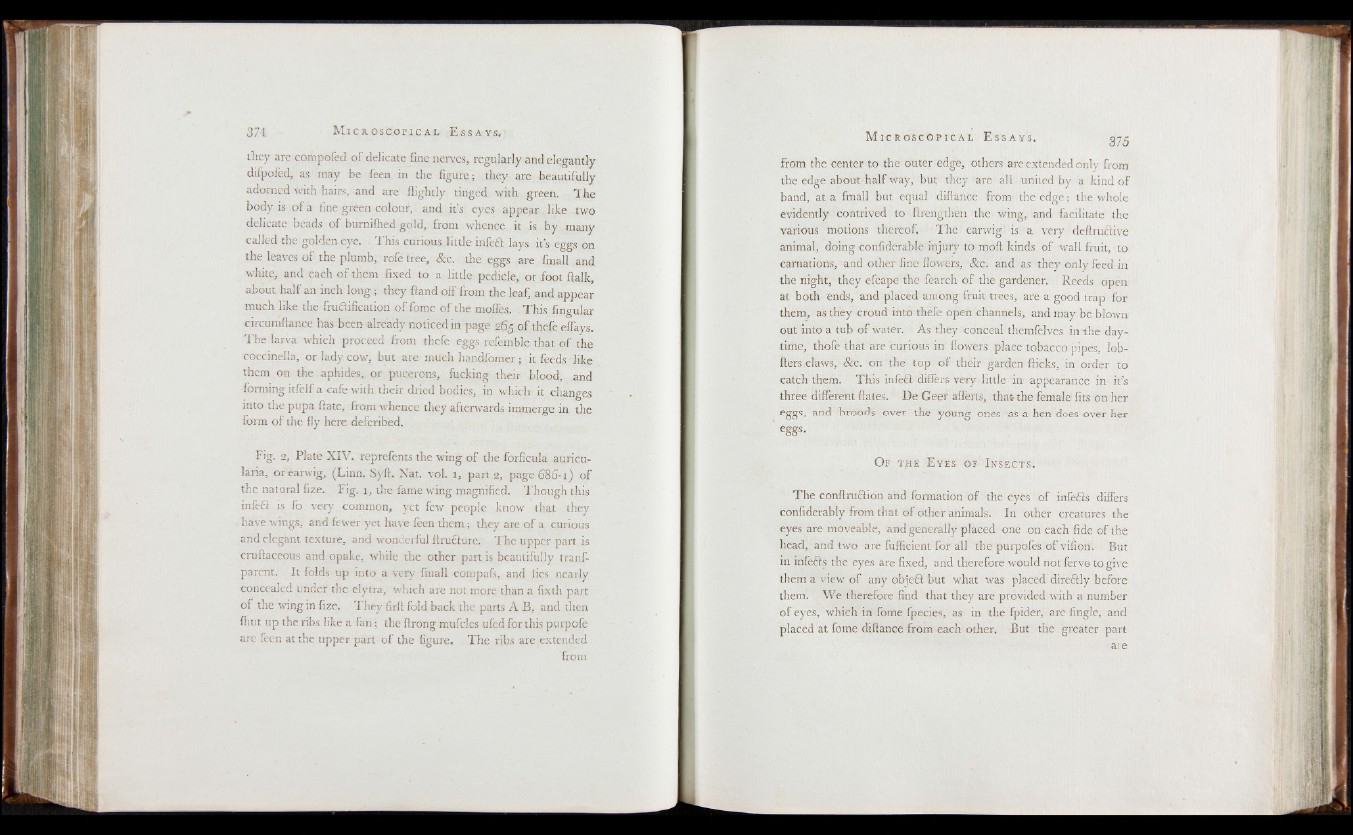
they are compofed o f delicate fine nerves, regularly and elegantly
difpofed, as may be feen in the figure; they are beautifully
adorned with hairs, and are flightly tinged with green. The
body is o f a fine green colour, and it’s eyes appear like two
delicate beads of burnilhed gold, from whence it is by many
called the golden eye. This curious little infeft lays it’s eggs on
the leaves o f the plumb, rofe tree, &c. the eggs are fmall and
white, and each of them fixed to a little pedicle, or foot flalk,
about half an inch long ; they ftand off from the leaf, and appear
much like the fruftification o f fome o f the mofles. This Angular
circumflance has been already noticed in page 265 o f thefe effays.
The larva which proceed from thefe eggs refemble that o f the
coccinella, or lady cow, but are much handfomer; it feeds like
them on the aphides, or pucerons, fucking their blood, and
forming itfelf a cafe with their dried bodies, in which it changes
into the pupa flate, from whence they afterwards immerge in the
form of the fly here defcribed.
Fig. 2, Plate XIV. reprefents the wing o f the forficula auricu-
laria, or earwig, (Linn. Sylf. Nat. vol. 1, part 2, page 686-1) o f
the natural fize. Fig. 1, the fame wing magnified. Though this
infeft is fo very common, yet few people know that they
have wings, and fewer yet have feen them; they are o f a curious
and elegant texture, and wonderful ftru&ure. The upper part is
cruftaceous and opake, while the other partis beautifully tranf-
parent. It folds up into a very fmall compafs, and lies nearly
concealed under the elytra, which are not more than a fixth part
o f the wing in fize. They firfl fold back the parts A B, and then
font up the ribs like a fan; the ftrong mulcles ufed for this purpofe
are feen at the upper part o f the figure. The ribs are extended
from
from the center to the outer edge, others are extended only from
the edge about half way, but they are all united by a kind of
band, at a fmall but equal difiance from the edge; the whole
evidently contrived to ftrengthen the wing, and facilitate the
various motions thereof, The earwig is a very deftruclive
animal, doing confiderable injury to moft kinds of wall fruit, to
carnations, and other fine flowers, &c. and as they only feed in
the night, they efcape the fearch o f the gardener. Reeds open
at both ends, and placed among fruit trees, are a good trap for
them, as they croud into thefe open channels, and may be blown
out into a tub o f water. As they conceal themfelves in the daytime,
thofe that are curious in flowers place tobacco pipes, lob-
fters claws, &c. on the- top o f their garden flicks, in order to
catch them. This infefil differs very little in appearance in its
three different ftates. De Geer afierts, that the female fits on her
eggs, and broods over the young ones as a hen does over her
eggs.
O f the E yes of Ixsect’s.
The conftruftion and formation o f the eyes o f infe&s differs
confiderably from that o f other animals. In other creatures the
eyes are moveable, and generally placed one on each fide of the
head, and two are fufficient for all the purpofes of vifion. But
in infefls the eyes are fixed, and therefore would not ferve to give
them a view o f any objeft but what was placed direflly before
them. We therefore find that they are provided with a number
o f eyes, which in fome fpecies, as in the fpider, are Angle, and
placed at fome diftance from each other. But the greater part
are